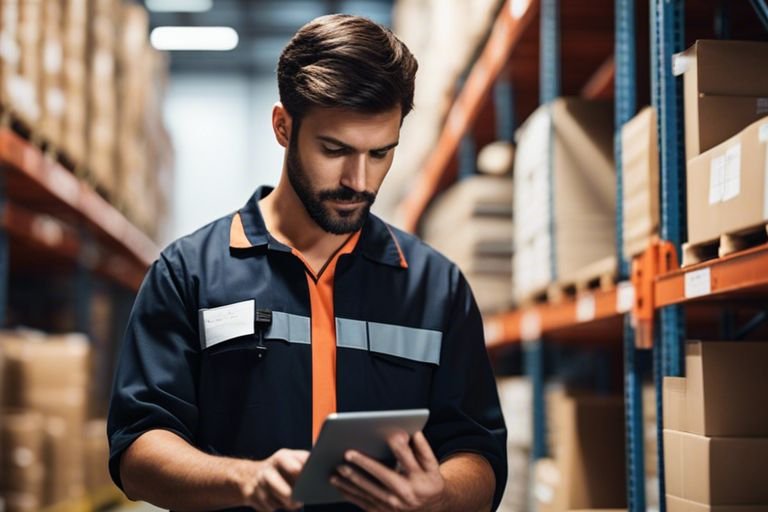Permit me to enlighten you on the best practices for conducting a cycle count in your warehouse to ensure inventory accuracy and optimize your warehouse operations. In this comprehensive guide, I will share with you the essential steps and tips for carrying out a successful cycle count, including the importance of preparation, the benefits of regular counts, and how to deal with potential challenges that may arise during the process. By the end of this post, you will have the knowledge and confidence to implement effective inventory management strategies in your warehouse.
Key Takeaways:
- Cycle counts are key to maintaining inventory accuracy in a warehouse setting.
- Implementing regular and systematic cycle counts can help identify and address inventory discrepancies in a timely manner.
- Utilizing barcode and RFID technology can improve the efficiency and accuracy of cycle counts.
- It is important to train and empower warehouse staff to conduct cycle counts effectively.
- Analyzing cycle count data can help identify trends, optimize inventory management, and prevent future discrepancies.
Understanding Cycle Counts
For a successful inventory management, it is crucial to have accurate and up-to-date records of your stock. That’s where cycle counts come in. Understanding how to properly conduct a cycle count can greatly improve the accuracy of your inventory and optimize your warehouse operations.
What is a Cycle Count?
A cycle count is a method of inventory auditing where a small subset of inventory is counted on a specific day. Unlike traditional physical inventory counts, where the entire warehouse is shut down, cycle counts are performed regularly, often on a daily or weekly basis. The goal is to count a portion of your inventory each day, so over time, every item in the warehouse is counted multiple times.
Tips for Conducting a Successful Cycle Count
When conducting a cycle count, it’s essential to have a plan in place to ensure accuracy and efficiency. Here are some tips to help you conduct successful cycle counts:
- Plan your cycle count schedule – Establish a regular schedule for cycle counts to ensure all items are counted multiple times throughout the year.
- Use ABC analysis – Prioritize which items to count first based on their importance and value to your business.
- Utilize technology – Implementing barcode scanning or RFID technology can streamline the counting process and reduce human errors.
- Train your staff – Ensure that your team is well-trained in the cycle counting process and understands the importance of accuracy.
After completing the cycle count, it’s important to analyze the results and take corrective actions for any discrepancies found. By regularly conducting cycle counts and making necessary adjustments, you can maintain a high level of inventory accuracy in your warehouse.
Factors to Consider
If you’re about to conduct a cycle count in your warehouse, there are several factors you should consider to ensure accuracy and efficiency. Here are some key factors to keep in mind:
- Frequency: How often should you conduct cycle counts? Deciding on the frequency will depend on the size of your inventory and the nature of your business.
- ABC Analysis: Are you prioritizing your inventory based on value and importance? This analysis can help you determine which items need to be counted more frequently.
- Technology: What tools and software will you use to conduct the cycle count? Utilizing barcode scanners and inventory management systems can significantly improve accuracy.
After considering these factors, you can create a cycle count plan that aligns with your business needs and ensures the accuracy of your inventory.
Factors Impacting Inventory Accuracy
When it comes to inventory accuracy, several factors can have a significant impact on the overall outcome of the cycle count process. These factors include:
- Location accuracy: Are items stored in the correct locations within the warehouse?
- Employee training: Have your employees been adequately trained to conduct cycle counts effectively?
- Process documentation: Do you have clear and detailed processes in place for conducting cycle counts?
Though these factors can pose challenges to inventory accuracy, they can be addressed and mitigated through proper planning and execution of cycle counts.
Best Practices for Warehouse Optimization
When striving for warehouse optimization, it’s essential to implement best practices that promote efficiency and accuracy. Some key best practices include:
- Regular audits: Conducting regular audits of your inventory can help identify and correct discrepancies proactively.
- Utilization of technology: Implementing barcode scanners and automated inventory management systems can streamline the cycle count process.
How to Conduct a Cycle Count
Keep in mind that conducting a cycle count is an essential part of maintaining accurate inventory records. To start off, I recommend choosing a specific area or subset of inventory to focus on for each cycle count. This will help you to tackle your inventory in manageable chunks and avoid overwhelming yourself or your team. Additionally, make sure to communicate the cycle count plan with your warehouse staff to ensure everyone is on the same page and knows their responsibilities.
Step-by-Step Guide for Performing a Cycle Count
When performing a cycle count, I suggest following a structured process to ensure accuracy and efficiency. Here’s a step-by-step guide for conducting a successful cycle count:
| Step | Description |
| 1. Planning | Plan the cycle count schedule, identify the items to be counted, and communicate the plan to the warehouse staff. |
| 2. Counting | Physically count the inventory items in the specified area, ensuring accuracy and attention to detail. |
| 3. Recording | Record the count results accurately, noting any discrepancies or issues encountered during the count. |
| 4. Reconciling | Reconcile the count results with the existing inventory records and investigate any discrepancies to identify root causes. |
Utilizing Technology for Efficient Cycle Counts
When it comes to leveraging technology for efficient cycle counts, I highly recommend implementing barcode scanning systems or inventory management software. These tools can significantly streamline the counting process and minimize human error. Additionally, utilizing mobile devices or handheld scanners can improve accuracy and allow real-time updates to the inventory system, ensuring up-to-date inventory records at all times.
I hope this information helps you to conduct successful cycle counts and optimize your warehouse operations for improved inventory accuracy and efficiency. Remember, a well-executed cycle count is essential for maintaining reliable inventory records and minimizing discrepancies in your warehouse.
Conclusion
Summing up, cycle counting is an essential method for ensuring inventory accuracy and optimizing warehouse operations. By regularly conducting cycle counts, you can identify and resolve discrepancies in inventory levels, leading to improved accuracy and efficiency in your warehouse. Utilizing the tips and best practices discussed in this article, you can streamline the cycle counting process, minimize disruptions to daily operations, and ultimately achieve better control over your inventory. With a proactive approach to cycle counting, you can better meet customer demand, reduce carrying costs, and make more informed decisions to drive business growth. By committing to regular cycle counting and implementing these strategies, you can ensure that your warehouse operates at its highest level of efficiency and accuracy.
FAQ
Q: What is a cycle count?
A: A cycle count is an inventory management method where a small subset of inventory is counted at regular intervals, often on a daily or weekly basis, to ensure inventory accuracy and detect any discrepancies.
Q: Why is cycle counting important for warehouse optimization?
A: Cycle counting is important for warehouse optimization because it helps to maintain accurate inventory records, reduces the risk of stockouts or overstock situations, and enables timely decision-making for reordering and restocking.
Q: How do you conduct a cycle count?
A: To conduct a cycle count, select a specific subset of inventory to count, such as a particular product line or storage location. Use this subset for counting on a regular schedule, and compare the counted quantities to the recorded quantities in the inventory management system.
Q: What are some inventory accuracy tips for conducting a successful cycle count?
A: Some tips for maintaining inventory accuracy during a cycle count include using barcode scanning or RFID technology for efficient counting, ensuring that the counting team is well-trained and follows a standardized process, and conducting random spot checks to validate the accuracy of the counts.
Q: How can cycle counting help in identifying and addressing inventory discrepancies?
A: By regularly counting and comparing inventory quantities, cycle counting can help identify discrepancies such as shrinkage, misplacements, or inaccuracies in the inventory records. This enables the warehouse to take corrective action to address these issues and maintain accurate inventory levels.










